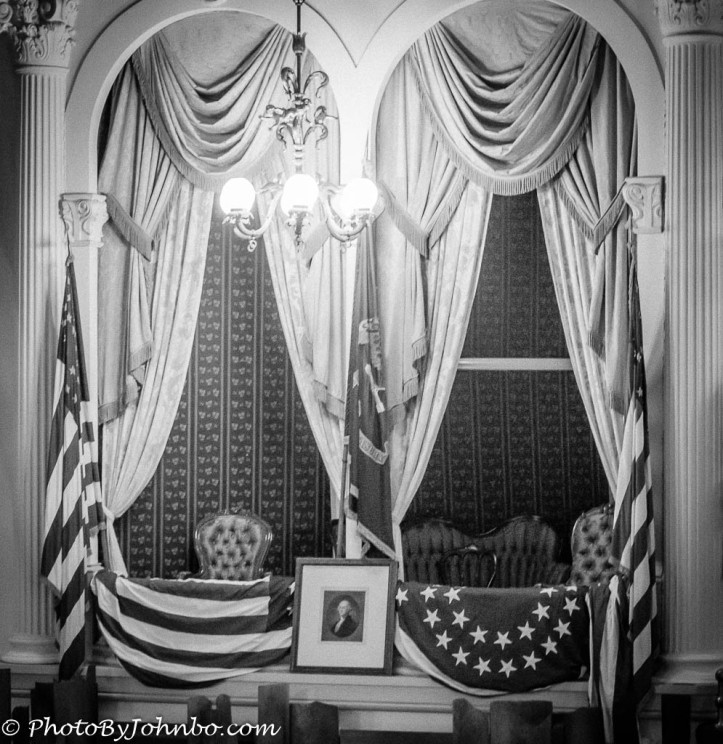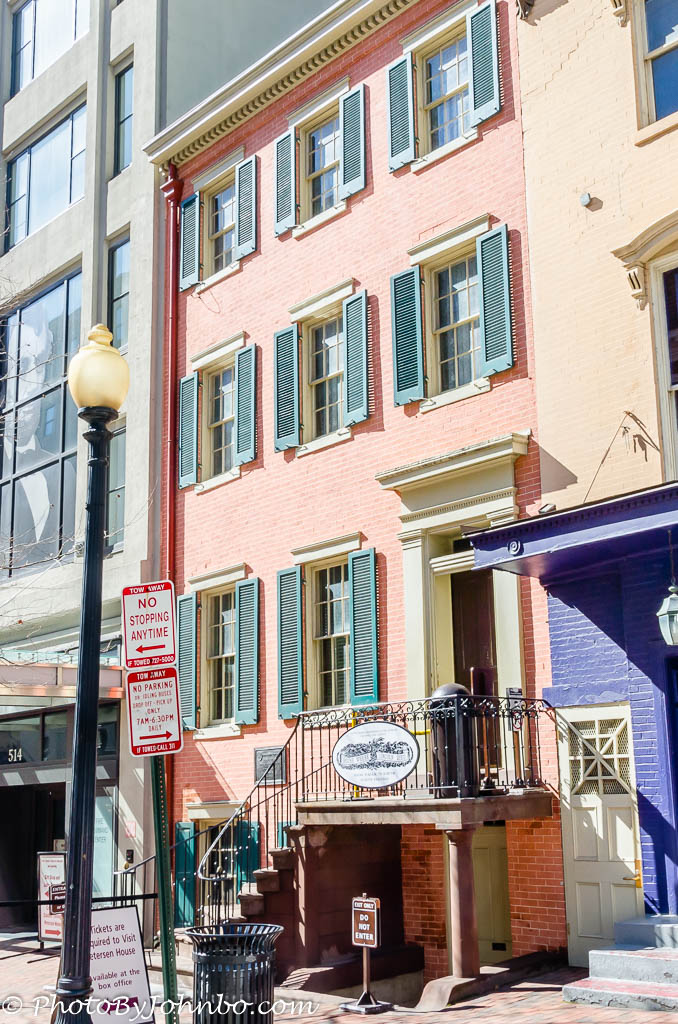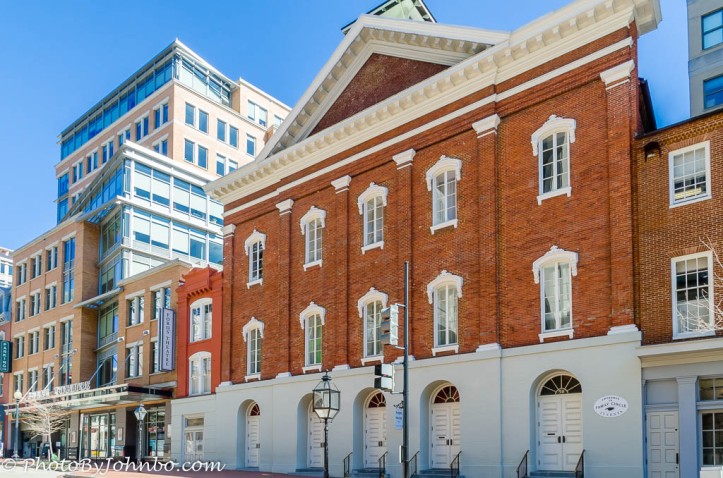On one fateful day for our country, April 14, 1865; Ford’s Theatre closed and remained so for over a century. In 1968, the theater opened again in cooperation with the National Park Service and a private organization known as Ford’s Theatre Society. The theater is not only a historic site, it is also a museum and a working theater. Back to April 14, 1865, Abraham Lincoln and his wife, Mary Todd Lincoln, arrived at the theater to see a performance of “My American Cousin”. During the performance, John Wilkes Booth fired the shot that killed the 16th President of the United States.
 An abandoned church leased in 1961 to theater manager John T. Ford, became a popular Washington DC theater. Today, just north of the original theater visitors will find a modern lobby, gift shop and reception area as can be seen in the opening photo. Tickets are required to enter the theater, whether it’s for a live performance or for a visit to the theater and museum.
An abandoned church leased in 1961 to theater manager John T. Ford, became a popular Washington DC theater. Today, just north of the original theater visitors will find a modern lobby, gift shop and reception area as can be seen in the opening photo. Tickets are required to enter the theater, whether it’s for a live performance or for a visit to the theater and museum.
Stopping at the ticket window, we were to find out that a limited number of same-day free tickets are given to people who “just show up.” I don’t know the number of available same-day tickets, and we were there in February, their off-season. On the website here, they recommend tickets in advance. The $3 fee ensures a tour of the museum and the theater. And if you time it right, a volunteer from the National Park Service in period costume will provide a narration from the balcony of the theater, in full view of the Presidential Box, now preserved and open only to viewing from the balcony and main floor of the theater.
Another attraction at certain times of the year are live plays that focus on the assassination. The schedule can be found on the Ford’s Theatre website. In the photo above, the lobby of the original theater is the first thing visitors see as they head downstairs to the basement museum.
 The museum exhibits, as shown in the photo above, include schedules for that fateful day, not only of the President, but of his assassin. The gallery of images includes several photographs taken in the museum.
The museum exhibits, as shown in the photo above, include schedules for that fateful day, not only of the President, but of his assassin. The gallery of images includes several photographs taken in the museum.
 From the theater balcony, it’s easy to see that John Wilkes Booth had a clear and open shot into the Presidential Box. I captured this image from the balcony. I decided to treat it as a photo of the day might have looked. Another view of the Presidential Box is included in the gallery.
From the theater balcony, it’s easy to see that John Wilkes Booth had a clear and open shot into the Presidential Box. I captured this image from the balcony. I decided to treat it as a photo of the day might have looked. Another view of the Presidential Box is included in the gallery.
 After the shooting, President Lincoln was carried across the street to the Peterson House where he passed away from his injury. The Peterson House is open for viewing as part of the Ford’s Theatre experience.
After the shooting, President Lincoln was carried across the street to the Peterson House where he passed away from his injury. The Peterson House is open for viewing as part of the Ford’s Theatre experience.
The gallery of images below features some of the museum exhibits. Click on an image to enlarge it and to scroll through the gallery.
John Steiner












A worthy review! Interesting to note that Booth was injured during his escape, found few allies to assist him and was captured/executed. Thus cementing his name in our history for generations. Finally he was able to climb out from the shadow of his brother’s fame. I suspect if you asked he’d say it wasn’t worth it. 😉
He expected a hero’s welcome and was disappointed to find it not to be.
It’s a good movie. You will enjoy it.
A really interesting post, John, and excellent pictures. I don’t know why I’ve never visited the theater, but you’ve convinced me to put it on my Bucket List.
Thanks! Been to Washington D.C. a few times and always found other places to visit. This year I heard from someone who stopped there on their trip. They convinced me that it certainly is a worthy stop. They were right!
Excellent photos, John, and a very informative post. I recognized some of the buildings seen in “Killing Lincoln”.
Thanks! I didn’t see that movie. I will have to check it out.